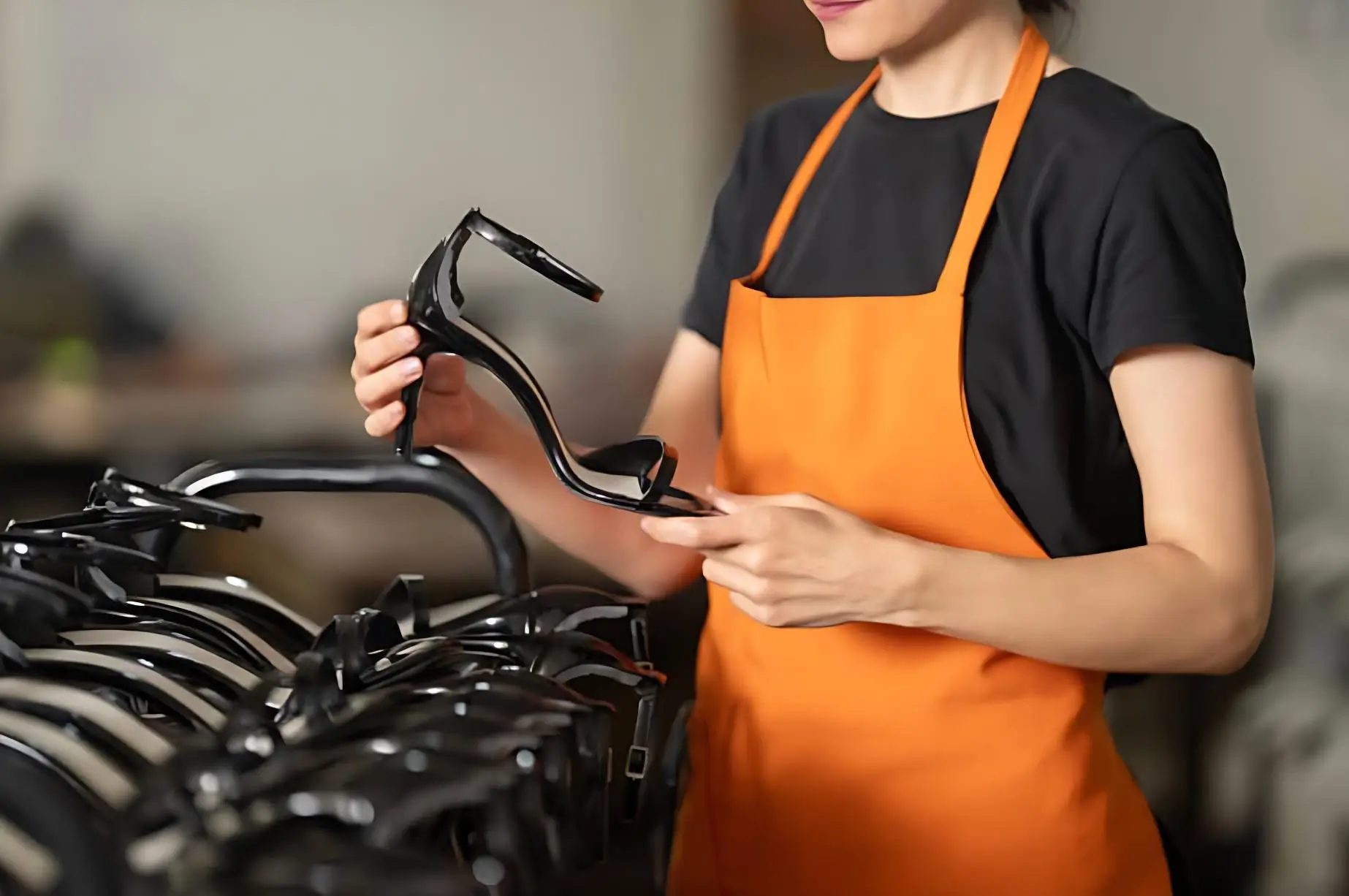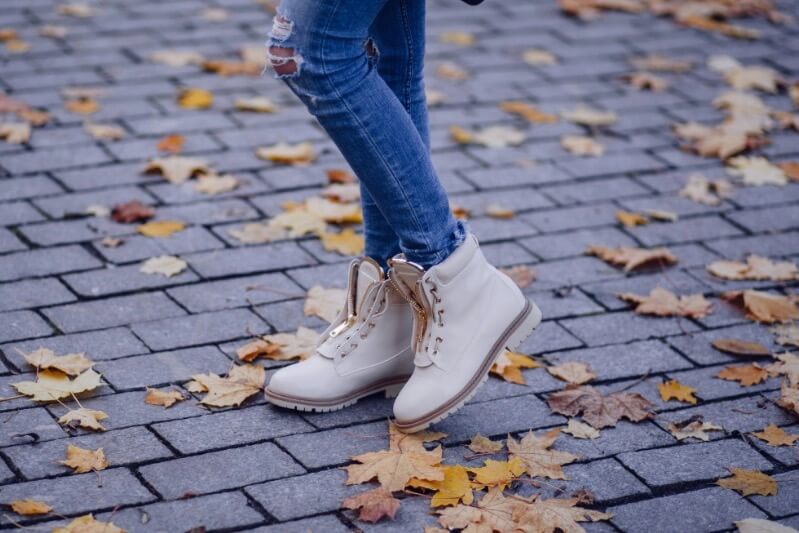As a brand owner or a buyer, I can tell you that your choice of shoe material is one of the most critical decisions you’ll make. It affects everything: your cost, your quality, your brand’s reputation, and ultimately, your profit margin. I’ve spent over a decade in the footwear industry, working with these materials every single day, from the factory floor to the final product.
This guide is my no-fluff, practical breakdown. It’s designed to help you choose the right material not just for the shoe, but for your business. We’ll compare the big three—leather, PU, and canvas—and dive into the performance synthetics and sustainable alternatives that are changing the game. Let’s get into it.
The Big Three: A Head-to-Head Comparison of Core Materials
Before we get into the weeds, let’s start with a quick, high-level comparison. For most brands, the choice often comes down to one of these three core materials. Understanding their fundamental trade-offs is key.
| Material | Best For | Pros | Cons | Typical FOB Cost Range (Casual Shoe) |
| Genuine Leather | Premium, heritage, and durable footwear (e.g., boots, dress shoes). | High perceived value, durable, breathable, molds to the foot. | Higher cost, heavier, requires more skilled labor, ethical/environmental concerns. | $15 – $30+ |
| PU (Synthetic Leather) | Fashion-forward styles, vegan products, and cost-effective collections. | Highly versatile (colors/textures), lower cost, consistent, easy to clean. | Less breathable than leather, can crack over time, quality varies hugely. | $8 – $18 |
| Canvas & Textiles | Casual, lightweight, and summer footwear (e.g., sneakers, slip-ons). | Breathable, lightweight, wide range of colors/prints, often lower cost. | Less durable, can be harder to clean, offers less support than leather/PU. | $7 – $15 |
A Deep Dive into Popular Shoe Materials
Now, let’s go deeper. As a buyer, you need to understand the nuances of each material and, more importantly, the business implications of choosing one over the other.
Leather: The Gold Standard of Quality and Durability
Leather is the classic, the original shoe material. It’s prized for its durability, its ability to mold to the wearer’s foot over time, and its high perceived value.
The Different Types:
Full-Grain Leather: This is the best of the best. It’s the top layer of the hide and shows all the natural grain and imperfections. It’s incredibly durable and develops a beautiful patina (a rich, aged look) over time. This is the material of choice for high-end, luxury boots and dress shoes.
Top-Grain Leather: This is the second-best grade. The surface is sanded to remove imperfections, which makes it a bit less durable than full-grain but gives it a more uniform appearance.
Suede: This is made from the underside of the hide, which is split and sanded to create a soft, napped finish. It’s beautiful and flexible but can be more susceptible to stains and water damage.
Nubuck: This is similar to suede but is made from the outer side of the hide, making it slightly more durable.
The Business Insight:
From my experience, choosing to work with genuine leather sends a clear message about your brand’s commitment to quality. It’s perfect for premium brands targeting a customer who values craftsmanship and longevity. However, you need to be aware of the implications. Leather requires higher MOQs from material suppliers, and it demands more skilled labor on the production line, both of which will impact your final cost. At a factory like JINHUA, we have dedicated leather production lines and experienced artisans to ensure the highest quality, but it’s a different level of investment compared to synthetic materials.
PU (Polyurethane): The King of Versatility and Cost-Effectiveness
PU, or synthetic leather, is the workhorse of the modern footwear industry. It’s a type of plastic that can be made to look and feel surprisingly like real leather, but with some key differences.
The Different Types:
Standard PU: This is the most common type, available in a staggering variety of colors, textures, and finishes.
Vegan Leather: This is a marketing term for high-quality PU that is designed to be an ethical alternative to animal leather.
Recycled PU: A more sustainable option, often made from post-consumer or post-industrial plastic waste.
The Business Insight:
PU is the engine of fast fashion and accessible, trend-driven footwear. Its main advantage is versatility. You can achieve almost any look—from a patent gloss to a matte suede finish—at a very competitive price. This makes PU the perfect material if you need to hit a specific, aggressive price point for a retail partner without sacrificing style. However, the quality of PU can vary enormously. There’s a huge difference between a cheap, flimsy PU and a high-quality, multi-layered synthetic. A good manufacturing partner can guide you to the best option for your product and budget.
Canvas & Textiles: The Choice for Breathability and Casual Style
Canvas and other textiles are the go-to materials for lightweight, casual, and warm-weather footwear.
The Different Types:
Cotton Canvas: The classic material for sneakers and slip-ons. It’s breathable, durable, and takes color and prints very well.
Recycled Polyester (rPET): This is a huge trend. It’s a fabric made from recycled plastic bottles. It’s a fantastic sustainable story for your brand and is becoming very popular for casual and athletic shoes.
Knit Uppers: Made famous by brands like Nike (Flyknit) and Adidas (Primeknit), these uppers are made from a single, knitted piece of fabric. They offer incredible comfort, breathability, and a modern, sock-like fit.
The Business Insight:
Canvas is ideal for spring/summer collections and for classic vulcanized shoe constructions. The material cost is generally lower than leather or high-quality PU. However, things like custom prints or developing a new knit pattern can add complexity and cost. If sustainability is important to your brand, you should ask your manufacturing partner if they can source GRS-certified (Global Recycled Standard) recycled canvas or rPET. We have helped many brands make this switch, and it’s a powerful marketing story.
Rubber vs. TPR vs. EVA: Understanding Your Outsole Options
The outsole is the part of the shoe that hits the ground. The material you choose here has a huge impact on durability, weight, and cost.
Rubber: The most traditional and often the most durable option. It offers excellent grip and wear resistance. However, it can also be heavy.
TPR (Thermo-Plastic-Rubber): A synthetic blend that is lighter and often cheaper than traditional rubber. It’s very common in casual footwear.
EVA (Ethylene-Vinyl Acetate): This is a foam material. It’s extremely lightweight and offers great cushioning. It’s the standard for the midsoles of almost all running shoes, and is also used as an outsole for very lightweight casual shoes and sandals. However, it’s the least durable of the three.
How to Choose the Right Material for Your Specific Shoe Type
Okay, now let’s put it all together. How do you make the right choice for your product? It all comes down to the shoe’s purpose.
For Athletic & Running Shoes (Focus on Breathability & Performance)
What you need: You need materials that are lightweight, breathable, and supportive.
The right choices:
Uppers: Engineered Mesh or Knit Uppers are the top choices here to allow heat and sweat to escape.
Midsoles: EVA Foam is the undisputed king for its lightweight cushioning.
Outsoles: High-abrasion Rubber is strategically placed in high-wear areas for durability and grip.
For Fashion Boots & Dress Shoes (Focus on Durability & Premium Feel)
What you need: You need materials that look and feel high-quality, are durable, and will age well.
The right choices:
Uppers: Full-Grain Leather or high-quality Suede are the best options. They signal quality and will last for years.
Outsoles: A durable Rubber or traditional Leather sole is standard for this category.
For Casual Sneakers & Slip-Ons (Focus on Style, Comfort & Cost)
What you need: You need a balance of style, all-day comfort, and a competitive price point.
The right choices:
Uppers: Canvas and PU (Synthetic Leather) are the most common and versatile choices. They offer a huge range of style possibilities at an accessible cost.
Outsoles: TPR or Rubber are both excellent options, providing a good balance of durability and flexibility for everyday wear.
Frequently Asked Questions
1. Which shoe material is the most durable?
Generally, full-grain leather is considered the most durable material for shoe uppers due to its tight, natural grain structure. For outsoles, high-abrasion carbon rubber is extremely durable.
2. Is PU material better than mesh for sneakers?
It depends on the purpose. Mesh is far more breathable, making it better for running or athletic shoes where heat management is key. PU is more durable and weather-resistant, making it a good choice for a casual, everyday sneaker that needs to stand up to more wear and tear.
3. What is “vegan leather” actually made of?
“Vegan leather” is a marketing term for a synthetic leather that does not use any animal products. Most of the time, it is made from PU (polyurethane) or PVC. There are also newer, more sustainable vegan leathers being made from things like pineapple leaves (Piñatex), cactus, or mushrooms.
4. How does my choice of material affect my MOQ and production lead time?
This is a great question. Sourcing genuine leather often requires a higher MOQ from the tannery compared to standard, in-stock PU or canvas. Developing a custom knit upper or a new EVA midsole also requires a significant development process, which can add several weeks to your initial lead time. Simpler, more common materials will almost always have lower MOQs and faster lead times.
5. What are the best sustainable shoe materials in 2025?
The most popular and accessible sustainable materials right now are GRS-certified recycled polyester (rPET) for uppers and linings, recycled rubber for outsoles, and organic cotton canvas. We are also seeing exciting innovations in bio-based materials like algae foam and plant-based leathers.
Your Action Plan: 5 Key Takeaways for Success
I hope this guide has given you a clearer picture of the world of shoe materials. Choosing the right material is a truly strategic business decision, not just a design choice. It will impact your costs, your production timeline, your brand’s image, and your long-term profitability.
To help you get started, here is a simple action plan based on what we’ve discussed:
Match the Material to the Purpose: This is the golden rule. A running shoe needs to breathe; a winter boot needs to be tough.
Understand the Cost Implications: Don’t just look at the material cost; consider how it will affect your labor costs, your MOQs, and your production complexity.
Don’t Compromise on the Outsole: The outsole is the foundation of your shoe. A cheap outsole that wears out quickly is one of the fastest ways to destroy your brand’s reputation for quality.
Leverage Sustainability as a Selling Point: Using certified sustainable materials is a powerful marketing story that can help you win over modern consumers.
Find a Partner, Not Just a Producer: The key is to find a manufacturing partner who is a true material expert and can guide you to the best solution.
Ready to Partner with a Material Expert?
At JINHUA, we live and breathe these materials every day. We believe that what separates a good shoe from a great one is a relentless obsession with the details.
It’s why we combine decades of traditional craftsmanship with the latest in modern technology. It’s why our veteran QC team treats your brand’s reputation as if it were our own. And it’s why we’re trusted by leading brands across five continents.
If you’re looking for a manufacturing partner who is as passionate about the process as you are about your brand, I would genuinely love to talk.
Got a project in mind? Let’s turn it into reality.
You can start the conversation by reaching out to our expert team through your preferred channel below.
📧 Email: sales@jinhuashoes.com
(You’ll get personalized, expert feedback within 12 business hours.)



